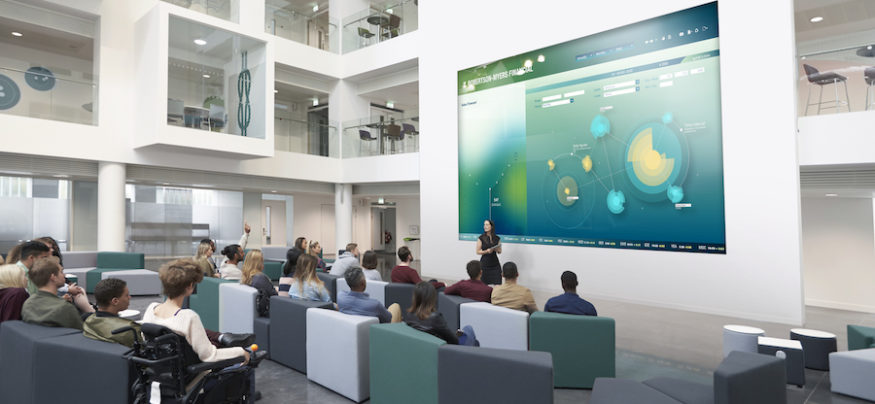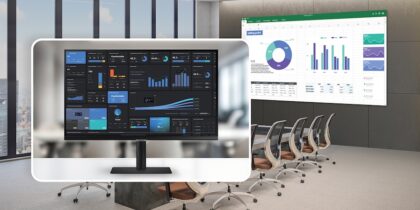The future of digital signage, particularly ahead of us in the near-term, will be driven by direct view LED technology, and was one of the strongest trends over the last year in the commercial display space.
All signs are pointing to wider adoption, as designers of commercial, retail, and public spaces consider display technology as an alternative to conventional design finishes we’ve grown accustom to, like metal, glass, tile and stone.
As we look forward while learning from historical trends, we learn that display technologies are maturing rapidly, converging and integrating in ways that are energizing environments by delivering better experiences and helping businesses improve operations through engaging visual communications.
Here’s how Samsung has entrenched itself in that evolution.
Technology Consumption
Today, we’re rolling out full digital signage networks, and it’s rare to walk into a business or even public space and not see some form of display technology. Like smartphones, tablets, and even wearable technology, displays and digital signage are becoming common place; part of the overall digital transformation that is bettering the use of communication dissemination. Put simply, we’re optimizing our spaces and time for quick and effective information sharing — and that’s changing the way businesses operate.
How to Plan and Deploy LED Digital Signage
Discover the unique advantages of direct-view LED technology over traditional LCD displays. Download Now
So how did we get to this point?
It owes to many things, like the increasing affordability of commercial displays and dramatic advances in picture quality. Set-up, installation and operation are all easier these days. But increased industry consumption also owes to experience — with solutions companies and their end-user clients better understanding what works and what’s needed to make digital signage, interactive displays and collaborative screens effective across a variety of use cases.
When you can make a whole feature wall a digital canvas, or all the walls of a designed space, that becomes transformational. One of the San Francisco office tower lobbies of a CRM software giant uses the full main wall for reception and elevator access as a digital canvas to reinforce its branding campaign. Same goes for a giant streaming media company with LA-based headquarters, where fine-pitch LED and audio are showcased to make visitors feel immersed in some of the company’s most popular products.
More specifically for 2019, LED will continue to see increasing adoption because the module-based displays offer more design flexibility. As spaces and architecture evolve in the business setting, so will displays to accommodate cutting edge designs.
Evolving Workspaces
Another trend for 2019 born out of last year is the evolution of workspaces. From open-concept offices to collaborative conference rooms, spaces need now more than ever to be equipped with displays and content management systems to carry proper information to employees and connect companies to each other in the 24/7 digital environment.
Formalized, top-down management meetings and big conference rooms are being replaced with collaborative teams, impromptu meetings and huddle spaces that necessitate a different set of tools. Samsung developed and released in 2018 a product called The Flip that went right to the heart of those changing workplace dynamics — a digital flip chart that allowed quick and easy collaboration and sharing on something affordable and portable. It’s been a big hit, and is something of an entry point for workplaces we think will use more and more digital. Additionally, the consumption and implementation of super large displays — in the 75 to 98 inch range — is growing due to lower price points and the desire to modernize conference room projector-based technology.
But also consider the need for display technology across industries. We’re thinking of health care facilities, the brick-and-mortar piece of the banking industry, even the manufacturing shop floor – places where employees or customers are looking for directions, updates, or simply a status of an ongoing project that can be refreshed in real-time.
The new year is nothing less than an entry point on the path to a rapidly evolving need for workplace and public space display technology. As business needs and consumer desires grow and change, so will Samsung’s technology to accommodate digital transformation taking place at break-neck speed.
We’re excited about the road ahead and what the journey will bring in terms of display technology — the best is yet to come.
Planning and deploying digital signage technology while it constantly evolves can be difficult — learn more about the process and best practices in this free white paper.









